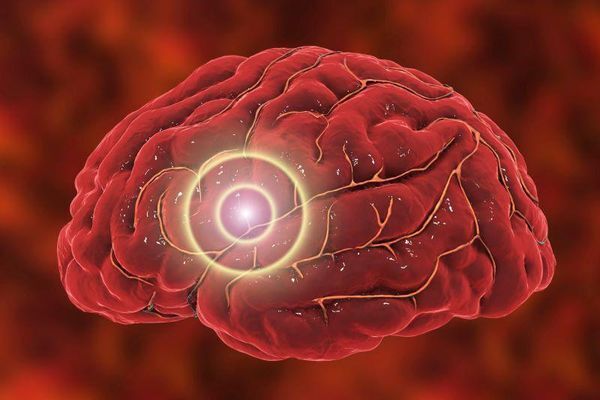Deep brain stimulation shows promise in treating binge eating disorder
A well-timed jolt of high-frequency electricity to a region of the brain implicated in food cravings appears to tamp down the impulses at the heart of binge eating disorder, researchers report.
Out-of-control eating that causes shame, regret or health problems is psychiatry’s most recently recognized eating disorder. It’s thought to affect as many as 5% of American adults, most — but not all — of whom are obese. While talk therapy and the ADHD medication Vyvanse are offered as treatments, the condition doesn’t always yield readily to either.
In a feasibility study that involved just two patients, researchers at Stanford and University of Pennsylvania tried treating binge eating disorder with a form of deep-brain stimulation similar to that used for epilepsy, obsessive-compulsive disorder, depression and Parkinson’s disease. The preliminary results were published recently in the journal Nature Medicine.
Expanding on work conducted on mice, the team discovered that the cravings just before an episode of binge eating set off a specific low-frequency electrical pattern in a part of the brain called the nucleus accumbens. That structure plays a key role in one of our most primitive mammalian behaviors: the pursuit of pleasure.
The two patients who volunteered for the study were women who had struggled for years with out-of-control eating and were willing to let researchers implant a suite of four electrodes in their brains.
The surgery was no minor procedure. After securing a patient’s head in a stereotactic cage, surgeons take filaments capable of recording and delivering electrical signals and sink them through the skull until they reach the limbic system, the deepest region of the brain. The process is so invasive that researchers allowed six weeks of recovery time before beginning the process of measuring the patients’ responses to food.
The first task was to eavesdrop on the women’s brains as they encountered the kinds of food that triggered binges. Then the researchers used the electrodes to disrupt the electrical signals that came right before the out-of-control eating began.
Both women were severely obese, and both had briefly benefited from gastric bypass surgery before they resumed binge eating and regained much of the weight they had lost. Each reported that different foods tended to be triggers; one told researchers she was “addicted” to chocolate, peanut butter and fast food.
“They couldn’t completely control themselves around food,” said Dr. Casey H. Halpern, a neurosurgeon at Penn and one of the study’s co-authors. “They craved food, and they were emotional eaters.”
Many Americans struggle with overeating, crave certain foods and eat to comfort themselves. But those with binge eating disorder do so in extreme ways that endanger their health, cause them to feel deeply shameful about their intake and often prompt them to withdraw from family and friends to hide the behavior.
Halpern said the volunteers showed similar brain patterns in response to delectable foods. It was akin to responses they’d seen in thousands of binge-eating mice and to those seen in many patients with obesity: The brain circuits that suppress reward-seeking behaviors appeared to have been “really perturbed.”
Once researchers identified the exact signature of the women’s brain waves before, during and after an episode of out-of-control eating, the electrodes were repurposed. When the system detected the distinctive electrical patterns of an impending episode, it delivered a brief — and to the women, undetectable — burst of high-frequency electrical stimulation that was intended to scramble the indiscriminate “Eat!” signal.
If the pre-binge electrical pattern didn’t immediately respond, the stimulation was repeated until it did. All told, each woman got an average of roughly 10 minutes a day of electrical stimulation — a far more limited use than is common in the treatment of disorders like OCD.
The intervention showed promise in both patients. Over the six months of the study’s initial phase, it reduced the frequency and severity of out-of-control eating episodes and prompted weight loss — about 18 pounds in one patient and 13 pounds in the other. For one subject, that was 4.5% of her body weight; for the other, 5.8%.
Though the weight loss was modest, it happened without any specific advice or a regimen prescribed by the researchers. To the team members’ further surprise, both women started to exercise without any prompting to do so.
The two subjects, along with four more people now being recruited into the study, will continue to receive the experimental treatment and will be followed for at least a year.

